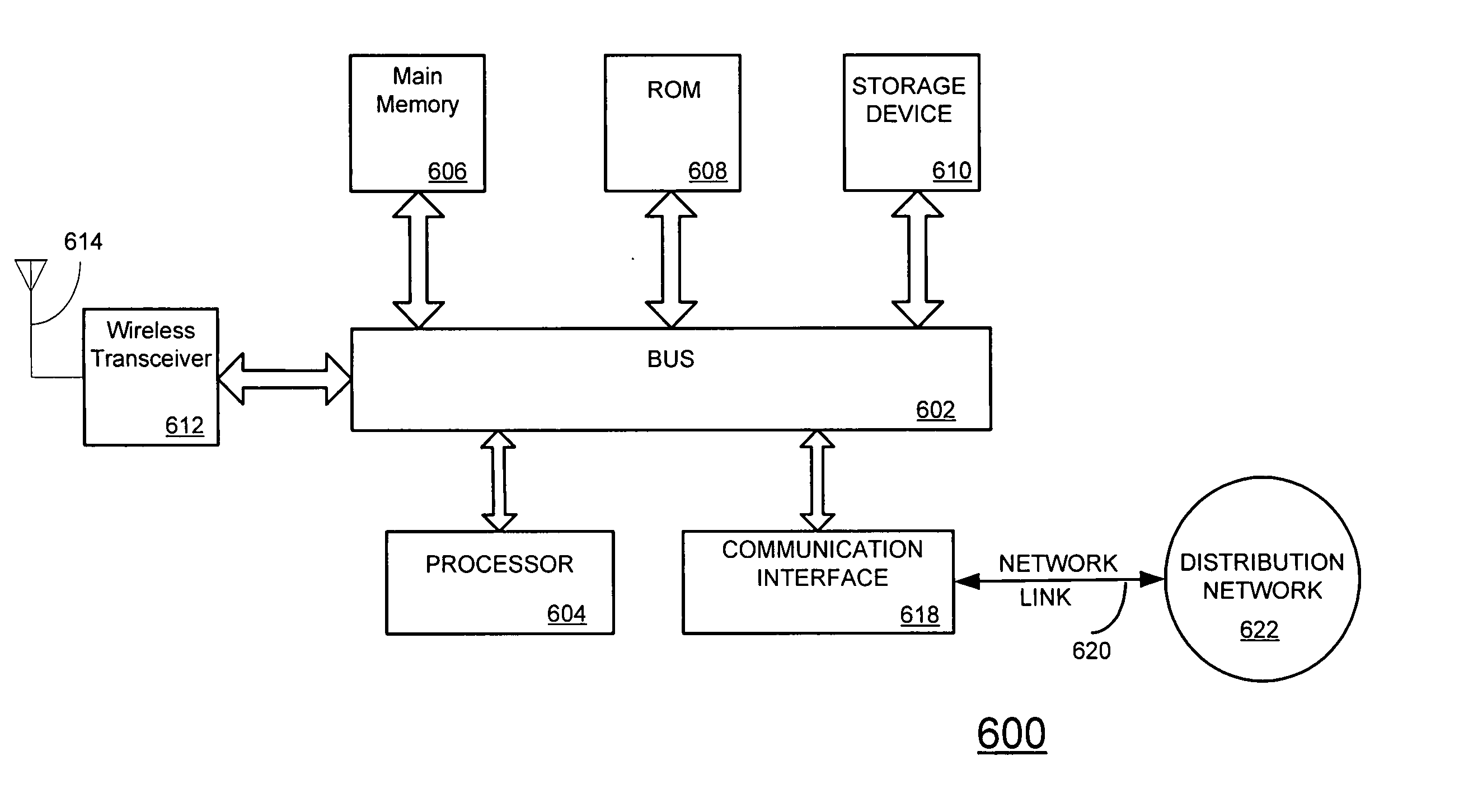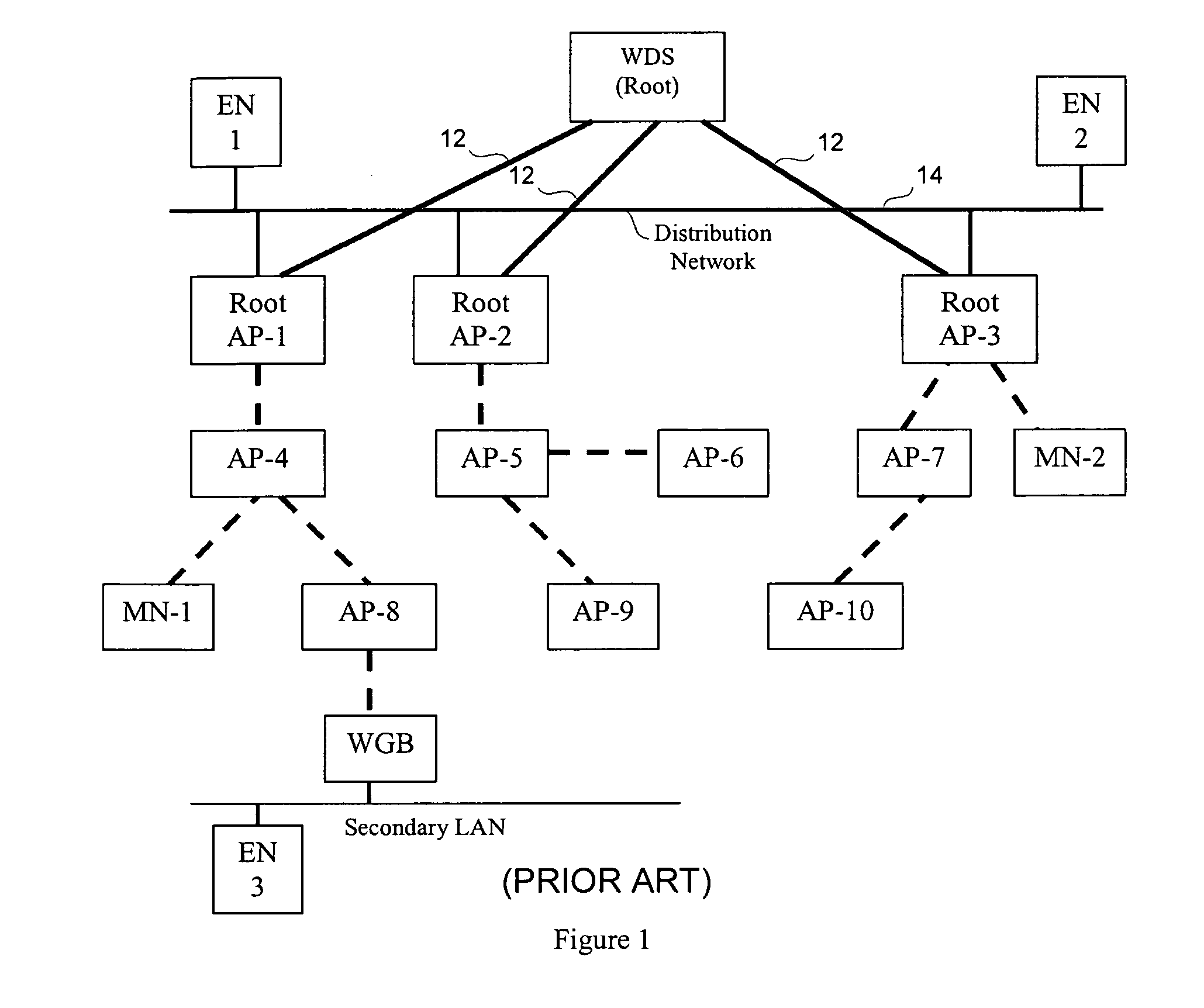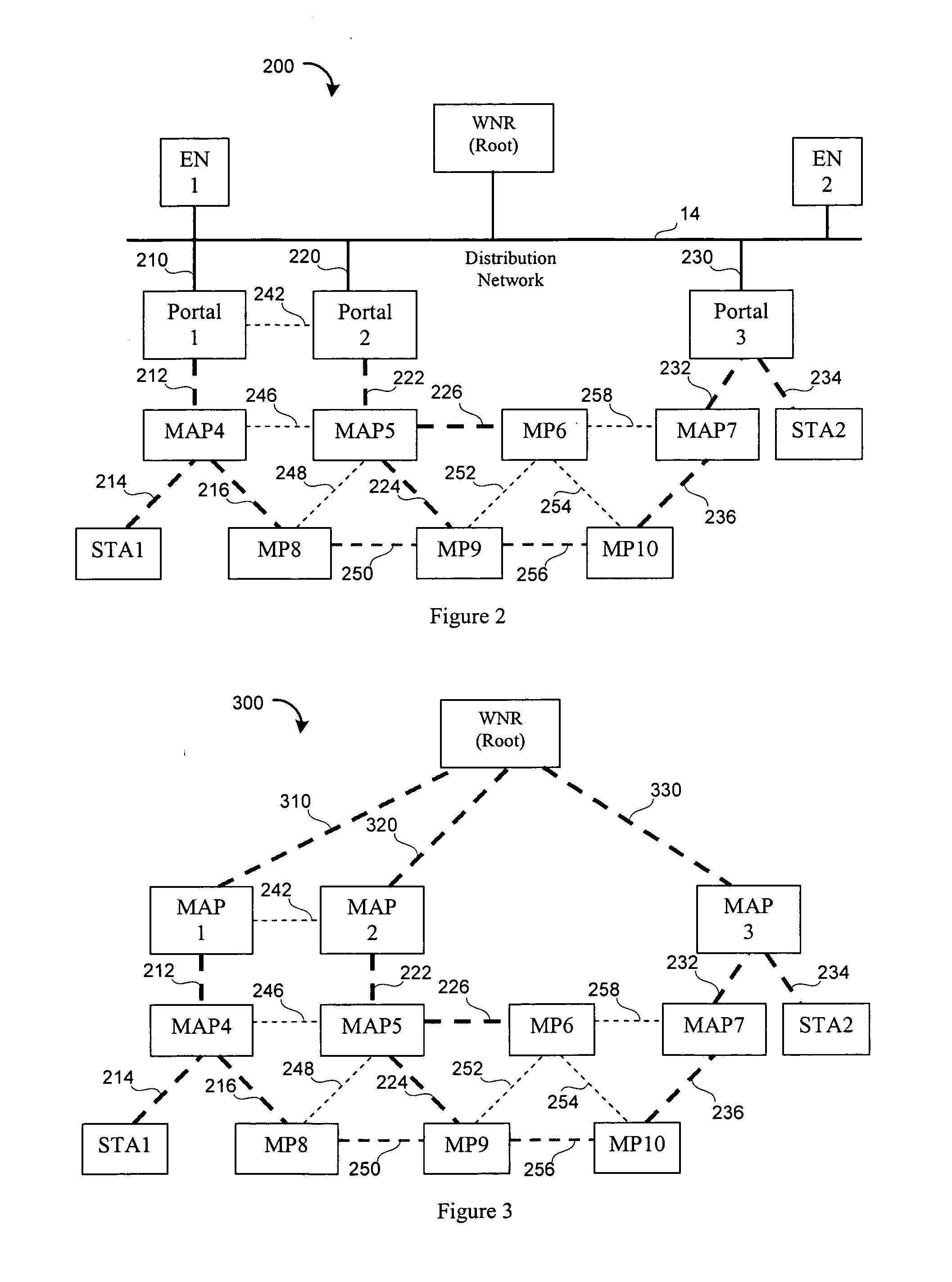System and method for spanning tree cross routes
a tree cross-route and tree-spanning technology, applied in the direction of data switching networks, digital transmission, electrical equipment, etc., can solve the problems of broadcast/multicast packet flooding, difficult to prevent broadcast/multicast packet looping, and create an explosion of route discovery messages and corresponding temporary routes
- Summary
- Abstract
- Description
- Claims
- Application Information
AI Technical Summary
Benefits of technology
Problems solved by technology
Method used
Image
Examples
Embodiment Construction
[0038] Throughout this description, the preferred embodiment and examples shown should be considered as exemplars, rather than limitations, of the present invention. An aspect of the present invention is a new protocol, STCRP (Spanning Tree Cross-Route Protocol), for establishing mesh-like “cross routes” in an underlying wireless tree topology. A cross route spans branches of the topology tree to provide a more optimal route between any two nodes in the wireless network. WLCCP and AODV are used as example path update and mesh routing protocols, respectively; however, STCRP can work with any suitable wireless spanning tree protocol, path update protocol or mesh routing protocol. In addition, a new centralized mesh routing protocol is described. The centralized mesh routing protocol is much more efficient and obviates the need for a distributed mesh routing protocol such as AODV.
[0039] The STCRP is primarily intended to optimize forwarding paths in a wireless network that is connecte...
PUM
 Login to View More
Login to View More Abstract
Description
Claims
Application Information
 Login to View More
Login to View More - R&D
- Intellectual Property
- Life Sciences
- Materials
- Tech Scout
- Unparalleled Data Quality
- Higher Quality Content
- 60% Fewer Hallucinations
Browse by: Latest US Patents, China's latest patents, Technical Efficacy Thesaurus, Application Domain, Technology Topic, Popular Technical Reports.
© 2025 PatSnap. All rights reserved.Legal|Privacy policy|Modern Slavery Act Transparency Statement|Sitemap|About US| Contact US: help@patsnap.com



